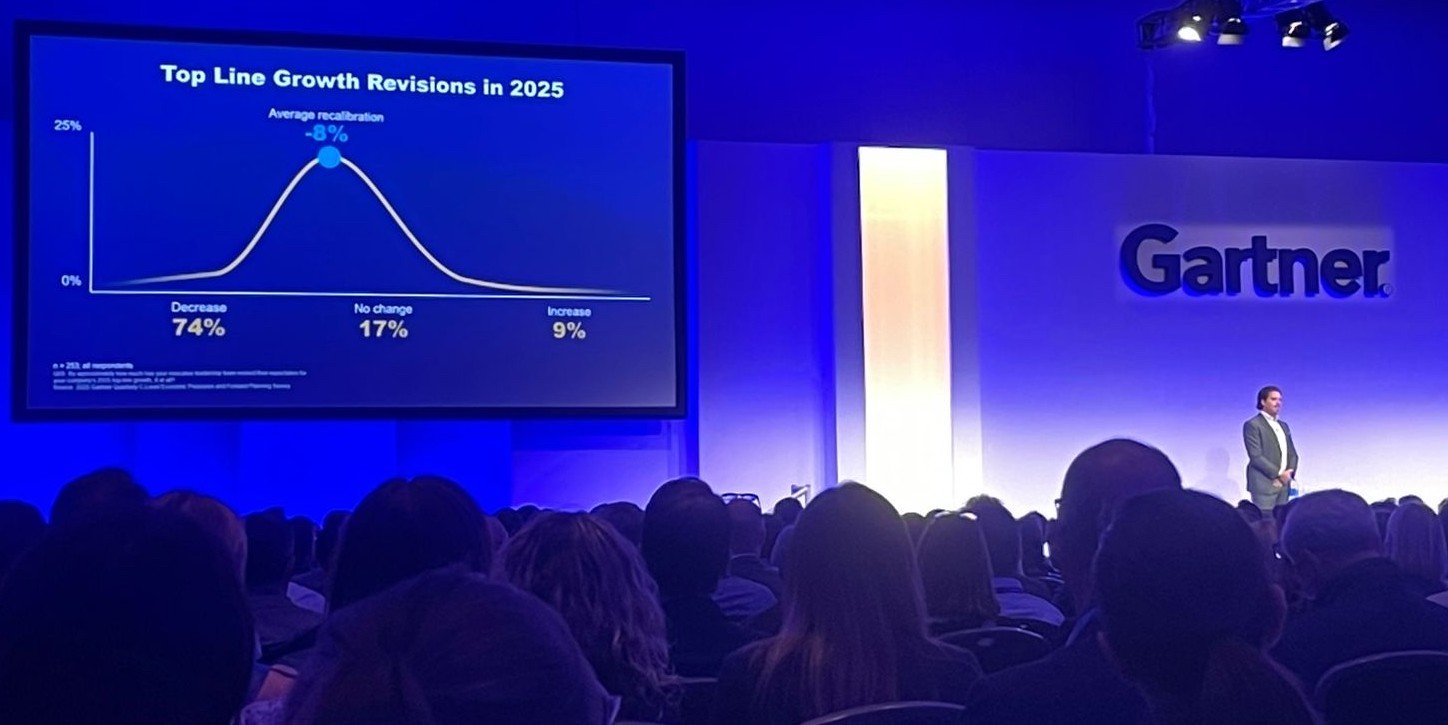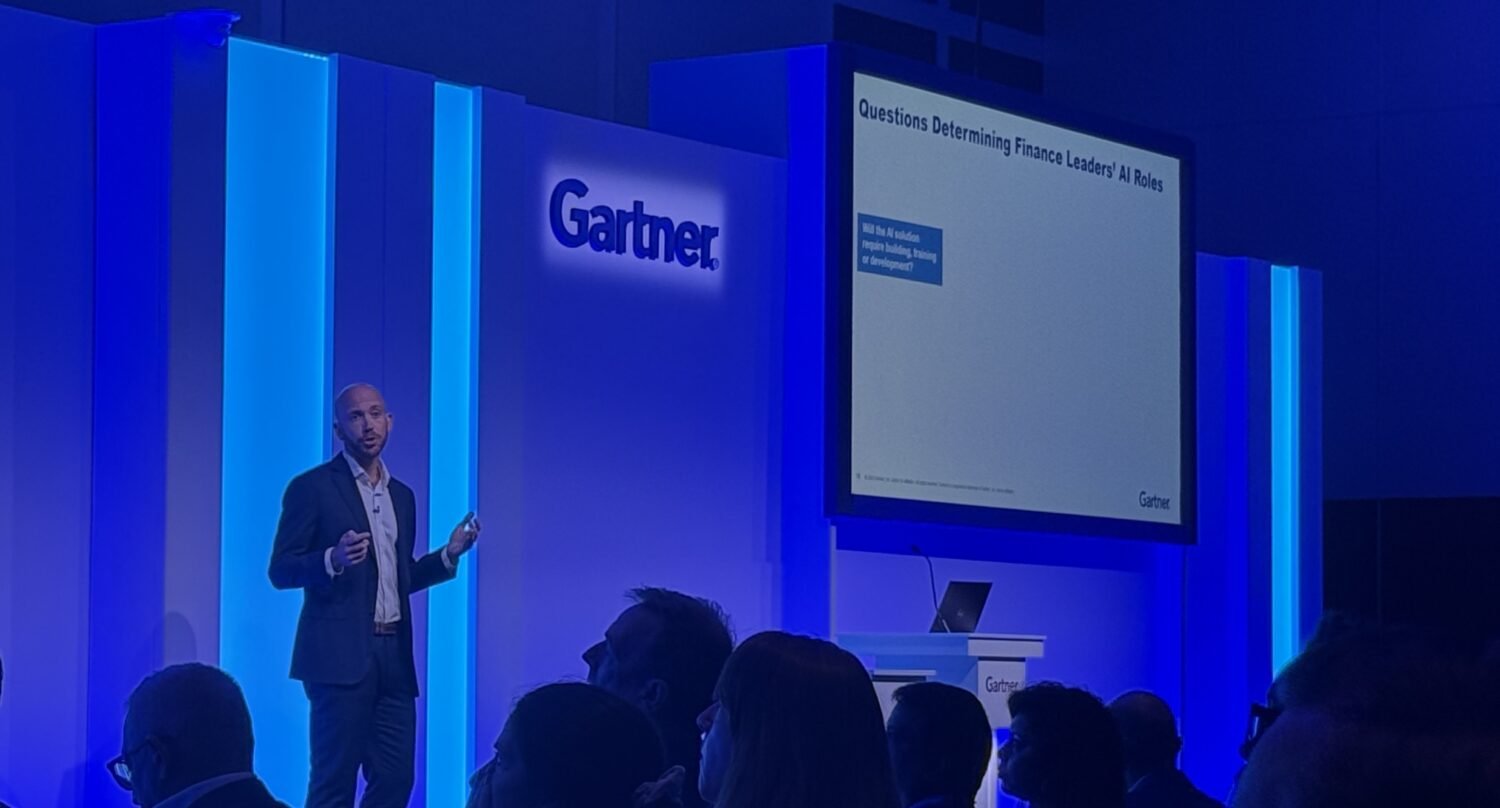Tools & Platforms
AI: The Church’s Response to the New Technological Revolution

Artificial intelligence (AI) is transforming everyday life, the economy, and culture at an unprecedented speed. Capable of processing vast amounts of data, mimicking human reasoning, learning, and making decisions, this technology is already part of our daily lives: from recommendations on Netflix and Amazon to medical diagnoses and virtual assistants.
But its impact goes far beyond convenience or productivity. Just as with the Industrial Revolution, the digital revolution raises social, ethical, and spiritual questions. The big question is: How can we ensure that AI serves the common good without compromising human dignity?
A change of era
Pope Francis has described artificial intelligence as a true “epochal change,” and his successor, Pope Leo XIV, has emphasized both its enormous potential and its risks. There is even talk of a future encyclical entitled Rerum Digitalium, inspired by the historic Rerum Novarum of 1891, to offer moral guidance in the face of the “new things” of our time.
The Vatican insists that AI should not replace human work, but rather enhance it. It must be used prudently and wisely, always putting people at the centre. The risks of inequalities, misinformation, job losses, and military uses of this technology necessitate clear limits and global regulations.
The social doctrine of the Church and AI
The Church proposes applying the four fundamental principles of social doctrine to artificial intelligence :
-
Dignity of the person: the human being should never be treated as a means, but as an end in itself.
-
Common good: AI must ensure that everyone has access to its benefits, without exclusions.
-
Solidarity: Technological development must serve the most needy in particular.
-
Subsidiarity: problems should be solved at the level closest to the people.
Added to this are the values of truth, freedom, justice, and love , which guide any technological innovation towards authentic progress.
Opportunities and risks
Artificial intelligence already offers advances in medicine, education, science, and communication. It can help combat hunger, climate change, or even better convey the Gospel. However, it also poses risks:
-
Massive job losses due to automation.
-
Human relationships replaced by fictitious digital links.
-
Threats to privacy and security.
-
Use of AI in autonomous weapons or disinformation campaigns.
Therefore, the Church emphasizes that AI is not a person: it has no soul, consciousness, or the capacity to love. It is merely a tool, powerful but always dependent on the purposes assigned to it by humans.
A call to responsibility
The Antiqua et nova (2025) document reminds us that all technological progress must contribute to human dignity and the common good. Responsibility lies not only with governments or businesses, but also with each of us, in how we use these tools in our daily lives.
Artificial intelligence can be an engine of progress, but it can never be a substitute for humankind. No machine can experience love, forgiveness, mercy, or faith. Only in God can perfect intelligence and true happiness be found.
Tools & Platforms
Cruz to introduce proposal for regulatory AI sandbox program within OSTP

Senate Commerce Committee Chairman Ted Cruz said he would introduce legislation to establish AI sandboxes to allow companies “room to breathe” without running up against regulations.
Cruz announced that proposal as well as a legislative framework for AI policy ahead of a Wednesday hearing before the Subcommittee on Science, Manufacturing, and Competitiveness on the administration’s recent AI Action Plan. The concept of regulatory sandboxes were among the more than 90 policy recommendations outlined in that document.
“Under the Sandbox Act, an AI user developer can identify obstructive regulations and request a waiver or a modification, which the government may grant for two years via a written agreement that must include a participant’s responsibility to mitigate health or consumer risks,” the Texas Republican said during the hearing. “To be clear, a regulatory sandbox is not a free pass. People creating or using AI still have to follow the same laws as everyone else.”
The proposal comes as President Donald Trump has taken an approach to AI that aims to clear the way for companies working on the technology. Identifying and removing regulatory barriers to AI and limiting federal funding to states with AI regulations deemed “burdensome,” for example, were also recommendations from that plan.
During that hearing, White House Office of Science and Technology Policy Director Michael Kratsios voiced support for the forthcoming legislation and said he was excited to work with Cruz on the bill. He also said that the approach had already been successful in the commercial drone industry.
Trump signed an executive order during his first administration to create a pilot program that established sandboxes for drone operations, Kratsios said. That work resulted in data that was used to help the Federal Aviation Administration promulgate its recently published draft drone rule.
“I have personally seen the power of these sandboxes to be able to allow great American minds and innovators to actually put their tools to the test in real-life situations, and from there, be able to provide the necessary valuable feedback back to the regulators to be able to create the right regulatory frameworks,” Kratsios said.
Whether or not the proposal has support across the aisle isn’t yet clear.
Also during the hearing, Sen. Lisa Blunt Rochester, D-Del., said that her state launched its own AI sandbox to allow companies to test the technology, which aligns with the AI Action Plan. However, she said that while she appreciated Cruz’s proposal, she wasn’t “sure that OSTP is the appropriate place for it — if we need one at all.”
Per a draft of the legislation released by Cruz on Wednesday, which was first reported by Bloomberg, the bill would be able to apply for modifications or waivers to regulations getting in the way of their technologies, and OSTP would coordinate those requests across the government.
The corresponding legislative framework also released Wednesday, meanwhile, focuses on five pillars: Unleashing American innovation, protecting free speech, preventing patchwork regulation, halting nefarious uses against Americans, and defending “human value and dignity.”
Notably for the U.S. government, opening federal datasets for AI model training is nested under the first pillar. There weren’t additional details on that bullet point.
Tools & Platforms
AI, identity, and the next phase for finance – Insights from Gartner’s CFO Conference

The first day of the Gartner CFO & Finance Executive Conference in London was a study in contrasts. On one hand, finance leaders are grappling with uncertainty, talent shortages, and the relentless hype around artificial intelligence. On the other, they are being urged to seize the moment, to move beyond guardianship and redefine finance as a catalyst for growth.
Across keynote sessions, panels, and conversations with technology providers, the message was clear: digital projects and automation alone will not transform finance.
A new identity is required, one that balances precision with agility, and control with empowerment.
Finance Needs a New Identity
The conference opened with a challenge from Gartner analysts Mallory Bulman and Clement Christensen: finance must stop treating digital projects as a collection of tactical fixes and instead reshape its very identity.
They laid out eight forces set to define finance through 2030, from the rise of do-it-yourself technology and AI-driven decision-making to the looming crash in finance talent. Matrixed organizations, regulatory flux, and the growing importance of human connection added to the picture of a function under strain.
Against this backdrop, Gartner argued for the rise of the “catalyst CFO.” These leaders, Bulman and Christensen said, distinguish themselves by adopting four habits: reframing how they talk about finance, embracing complexity, deploying business tools rather than more headcount, and focusing on products rather than processes.
The message resonated across the day: how finance leaders describe their teams shapes how those teams are seen, and whether they are viewed as cost centers or strategic drivers.
Leadership and AI Under the Microscope
Other Gartner sessions reinforced the same themes.
Dennis Gannon, VP Analyst at Gartner, pointed to worrying data on leadership in finance: fewer than half of employees are satisfied with management at their firms, and one in four are looking to leave. Promoting technical experts without equipping them for leadership, he warned, is a recipe for disengagement and attrition. His solution: develop “connector managers” who prioritize relationships, empathy, and adaptability alongside business acumen.

Marco Steecker, Senior Director of Research at Gartner, urged CFOs to take a deliberate role in shaping AI adoption. Whether as end-user advocates, co-developers, pioneers, or enterprise champions, CFOs need to start with business objectives and then align AI solutions.
Yet Gartner data shows fewer than 40% of finance leaders are even consulted on enterprise AI projects, a gap that risks leaving finance on the sidelines of critical decisions.
And in a session on digital storytelling, Christensen reminded attendees that numbers rarely move people on their own. Wrapping data in narratives and visual context, he argued, is essential if CFOs want their insights to drive decisions. Poor communication of financial information, Gartner estimates, costs companies up to 8% of EBITDA.

Conversations with Industry Leaders
If the keynotes set the strategic tone, the conversations on the sidelines brought the operational reality into focus.
Over the course of Day One, The CFO spoke with leaders from FloQast, BlackLine, Soldo, and other providers shaping the finance technology landscape.
FloQast: AI, Change Management, and the Close
For Hugh O’Neill, Chartered Accountant at FloQast, the conference floor was dominated by two themes: AI and change management.
“There’s a lot of talk about AI, what it actually does and how to use it,” he said. “But there’s also a big people element. How do we manage the transition? How do we evolve? It’s an evolution of the profession.”
O’Neill, who previously served as a finance director, said the draw of technology is its ability to free teams from spending endless hours fixing data and reconciling numbers. “Historically, finance has been about getting the numbers right, looking at the past. Technology allows us to move beyond that—to automate the mundane tasks and focus on critical thinking and faster decision-making.”
In his own session, The AI Challenge – Reimagining the Finance Function, O’Neill spoke about the pressure to shorten the close cycle. “If you have a 10-day close, you want five. If you have five, you want two. If you have two, you want zero,” he said.

AI, he argued, can take on transactional processes and allow humans to focus on strategic problems. The challenge is clarity: defining which processes to change, what success looks like, and preparing people for new roles.
“AI creates uncertainty, but it also creates possibility,” he said. “It’s about defining what can be automated and then guiding people toward what they should do next.”
Looking ahead, O’Neill believes finance teams will need to rebalance their skills mix.
“Today, maybe 80% of roles are traditional finance and 20% are systems-focused. That’s shifting toward 50/50,” he predicted. Leaders, he said, must guide their teams through that change while celebrating wins along the way.
BlackLine: Building Trust in AI
Few providers drew a bigger crowd than BlackLine. The company’s session was so oversubscribed that some CFOs sat cross-legged on the floor to listen. The draw, according to executives Philippe Omer-Decugis and Josh May, came down to one word: trust.
“AI is on everyone’s agenda, but 95% of projects don’t deliver ROI because of immaturity, whether in change management or use cases,” Omer-Decugis said. “CFOs are being asked to orchestrate transformation across the entire organization, while also cutting costs, managing risk, and upskilling people. What they want now is simple: cut through the noise and show me the use cases that deliver value today.”
BlackLine’s answer is Verity, a new platform whose name means “truth.” The system uses ERP data to validate journal entries at the source, which in turn improves transaction matching, reconciliation, and ultimately the accuracy of financial statements. “It’s like suddenly adding a team of analysts who never get sick and never miss things,” May said.
He pointed to intercompany accounting as a prime use case. Many global firms still struggle with inefficiencies that lead to large write-offs. “If you get the inputs right and validate them with AI, you can scale without endlessly adding headcount,” May said.
Beyond the technology, Omer-Decugis highlighted a broader shift in shared service centers. “Simply adding more people in low-cost markets is no longer enough. CFOs need technology layered into these models to meet productivity expectations,” he said.
Both executives stressed that CFOs must also partner closely with CIOs as they migrate ERP systems like SAP ECC to S/4HANA. “The best CFOs I meet have a clear understanding of architecture and digital transformation,” Omer-Decugis noted.
For BlackLine, trust is the differentiator. “When we publish something, it’s a solution, not just a slide,” Omer-Decugis said. “That’s why CFOs know they can trust us.”
Soldo: From Guardian to Catalyst
At Soldo, the focus is on giving finance leaders control of decentralized spending without becoming bottlenecks. Brandon Till, Head of Business Solutions, described the company’s platform as a way to handle “all the messy spend that doesn’t fit through central processes.” Employees can access money when needed, while finance maintains oversight through cards, a platform, and an app.
For Till, the Gartner keynote’s warning against a “guardian mindset” hit home. “Nine out of ten CFOs are getting it wrong by holding back too much,” he said. “The opposite should be true, finance needs to be a catalyst, enabling teams to seize opportunities. That’s where the successful businesses of the future will come from.”
He also flagged the looming retirement cliff in accounting. “Seventy-five percent of people in accounting are at or nearing retirement age. Finance teams need to speed up transformation to fill that gap,” he said. That means investing in automation, but also building workplaces that attract young talent.
“Young professionals don’t want to join teams stuck in outdated processes,” Till said. “They want to be part of finance teams that are strategic leaders, using modern tools.”
Internally, Soldo uses AI tools across functions, from one-off design purchases to enterprise-wide LLM licenses. Externally, the platform makes it easier for teams to adopt new technologies without lengthy procurement hurdles.
Looking forward, Till sees a clear shift in the CFO’s role. “Just as you get a laptop when you start a job, you should also get a company card,” he said. “Finance should never be a bottleneck. It should enable people to do their jobs quickly and well.”
Aibidia: Transfer Pricing as a Strategic Asset
Reuben Sagar, Chief Revenue Officer, and Maria Helander, VP of Product, discussed the findings of Aibidia’s 2025 State of Transfer Pricing report. With only 14% of firms making heavy use of structured transfer pricing data, Helander argued that CFOs must reframe compliance data as a value-generating asset.
Sagar highlighted the push toward audit readiness: “Rather than reacting, companies want to have data in place to understand why decisions were made.” Both executives said regulatory uncertainty—from OECD Pillar Two to tariffs—has pushed transfer pricing firmly onto the CFO agenda.
Esker: Agentic AI and the Expanding CFO Role
Eric Bussy, Chief Marketing Officer at Esker, said CFOs need visibility and agility in a volatile world. Esker’s Agentic AI Suite, which integrates both source-to-pay and order-to-cash, is designed to minimise silos and accelerate responsiveness.
“The time of the ERP is not compatible with the time of the organisation,” Bussy said. He described the CFO’s evolving position as a “strategic connector” across the C-suite and argued that real-time transparency—delivered in hours, not days—is now a baseline expectation.
Pigment: Analyst Agents and Digital Workforces
Edouard Beaucourt, Head of EMEA at Pigment, unveiled the company’s launch of three AI-powered agents—Analyst, Planner, and Modeler—during the event. Designed to accelerate replanning and scenario modelling, the agents form what he called a “digital workforce” that augments finance teams.
“The idea that AI will replace people is a misperception,” Beaucourt said. “It’s really about augmentation.” Pigment’s customers, including Vinci, Idex, Snowflake, and Carhartt, are already using AI assistants in production, with Beaucourt stressing that the priority is selecting the right technology, targeting processes with quick returns, and cultivating adaptable early adopters.
Serrala: Intelligent Working Capital as a Growth Lever
Rami Chahine, Chief Product & Technology Officer at Serrala, said CFOs must move beyond back-office routines to treat working capital as a lever for growth. By combining receivables, payables, and treasury into a single platform, Serrala enables real-time visibility.
“There’s a misconception that AI is a silver bullet,” Chahine said. “The reality is AI only works if the data is clean, integrated, and available in real time.” Customers are already seeing up to 40% of invoices processed touchlessly, freeing teams to focus on strategy.
insightsoftware: Precision, Not Guesswork
Shameek Bhushan, Senior Vice President at insightsoftware and Co-Founder of JustPerform, underlined that finance cannot operate on estimates. “Numbers are never wrong, and responses need to be precise,” he said. While AI can automate reconciliation and other repetitive tasks, Bhushan warned that humans must remain in the loop to validate outputs.
He positioned insightsoftware as one of the broadest office-of-finance platforms, spanning reporting, consolidations, and regulatory filings. Looking ahead, he said agentic workflows—specialised digital agents trained like employees—will be the next frontier.
Anaplan: Bridging Strategy and Execution
Piers Bradley, Senior Solution Consultant at Anaplan, described the company’s mission as “decision excellence.” He said CFOs face the dual challenge of setting long-term strategies while managing day-to-day execution. Anaplan’s AI roadmap spans predictive forecasting, generative conversational tools, and emerging agentic capabilities.
“It’s about removing blind spots and ensuring planners can correct course quickly,” Bradley said. He encouraged CFOs to engage directly with the technology through workshops and executive sessions, adding: “Planning technology is now fundamental to running a successful business.”
Themes Emerging
By the close of Day One, several themes had crystallized.
First, AI is unavoidable, but its success depends on precision, governance, and the ability to translate use cases into tangible outcomes. From FloQast’s focus on closing cycles to BlackLine’s emphasis on intercompany accounting and Soldo’s work on decentralized spend, the practical applications are beginning to outweigh the hype.
Second, identity and leadership matter as much as technology. Gartner’s call for finance to reframe itself as a catalyst, combined with warnings about weak people management, underscored that transformation is not just a technical project. It is a cultural one.
Third, the talent equation is becoming urgent. Whether it is FloQast predicting a 50/50 split between finance and systems skills, or Soldo warning of a retirement cliff, CFOs are acutely aware that automation alone cannot fill the gap. Attracting and retaining talent will require modern tools, new mindsets, and better leadership.
Finally, trust remains the ultimate currency. As BlackLine executives noted, CFOs want AI they can rely on. Without trust in the numbers, no amount of dashboards or models will suffice.

Closing Note
Day One of the Gartner CFO & Finance Executive Conference underscored both the pressure and the possibility facing finance leaders. AI, identity, and transformation dominated the agenda, but the real test lies in execution—how quickly CFOs can turn theory into practice while guiding their teams through change.
Day Two promises deeper dives into future-ready operations, more on agentic AI, and further perspectives from finance leaders on the front lines of transformation.
Stay tuned..
Was this article helpful?
YesNo
Tools & Platforms
US Senator Cruz Proposes AI ‘Sandbox’ to Ease Regulations on Tech Companies

Republican U.S. Senator Ted Cruz introduced a bill on Wednesday that would let artificial intelligence companies apply for exemptions to federal regulation to help them experiment in developing new technology.
Cruz leads the Senate Commerce Committee, which held a subcommittee hearing on Wednesday about ways Congress can lower regulatory hurdles for the tech industry to give U.S. companies a boost in competing with China.
“A regulatory sandbox is not a free pass. People creating or using AI still have to follow the same laws as everyone else,” Cruz said at the hearing.
If passed by Congress, the bill would allow agencies that oversee federal regulations to consider applications from companies to be exempt from regulations for two years at a time, and require companies to outline the potential safety and financial risks and how they would mitigate them.
Consumer rights advocacy group Public Citizen raised concerns about provisions in the proposal that would allow the White House’s Office of Science and Technology Policy to override decisions by agency heads, and said the proposal “treats Americans as test subjects.”
“The sob stories of AI companies being ‘held back’ by regulation are simply not true and the record company valuations show it,” said J.B. Branch, Public Citizen’s Big Tech accountability advocate.
Cruz’s sandbox bill does not include a ban on state regulation, something that the tech industry has sought and the White House has said is necessary to boost innovation. A bid to put a ban in place as part of President Donald Trump’s tax-and-spending bill was defeated in the Senate on a 99-1 vote in July.
OSTP Director Michael Kratsios said at the hearing that Congress should reconsider the issue.
“It’s something that my office wants to work very closely with you on,” he told Cruz at the hearing.
Topics
USA
InsurTech
Legislation
Data Driven
Artificial Intelligence
Tech
Was this article valuable?
Here are more articles you may enjoy.
Interested in Ai?
Get automatic alerts for this topic.
-

 Business2 weeks ago
Business2 weeks agoThe Guardian view on Trump and the Fed: independence is no substitute for accountability | Editorial
-
Tools & Platforms4 weeks ago
Building Trust in Military AI Starts with Opening the Black Box – War on the Rocks
-

 Ethics & Policy2 months ago
Ethics & Policy2 months agoSDAIA Supports Saudi Arabia’s Leadership in Shaping Global AI Ethics, Policy, and Research – وكالة الأنباء السعودية
-

 Events & Conferences4 months ago
Events & Conferences4 months agoJourney to 1000 models: Scaling Instagram’s recommendation system
-

 Jobs & Careers2 months ago
Jobs & Careers2 months agoMumbai-based Perplexity Alternative Has 60k+ Users Without Funding
-

 Education2 months ago
Education2 months agoMacron says UK and France have duty to tackle illegal migration ‘with humanity, solidarity and firmness’ – UK politics live | Politics
-

 Education2 months ago
Education2 months agoVEX Robotics launches AI-powered classroom robotics system
-

 Podcasts & Talks2 months ago
Podcasts & Talks2 months agoHappy 4th of July! 🎆 Made with Veo 3 in Gemini
-

 Funding & Business2 months ago
Funding & Business2 months agoKayak and Expedia race to build AI travel agents that turn social posts into itineraries
-

 Podcasts & Talks2 months ago
Podcasts & Talks2 months agoOpenAI 🤝 @teamganassi

